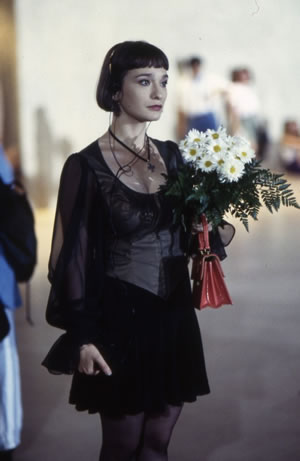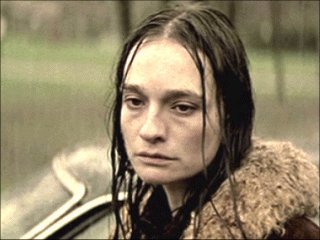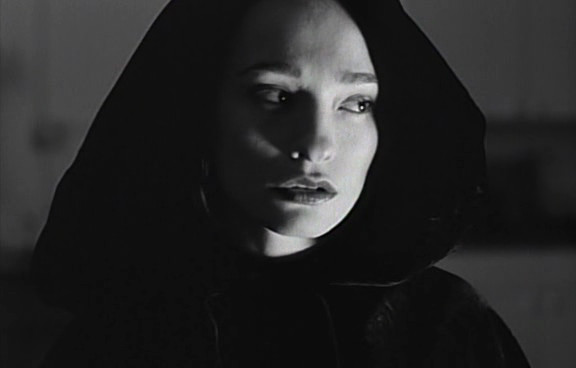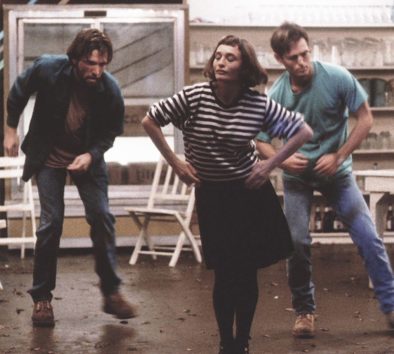 The nineties indie film actor was an occupation both enviable and thankless. In the film world back then the independent faction represented the epitome of artistry, refinement and cool, with a set of recurring actors— Eric Stoltz, Lily Taylor, Parker Posey, Martin Donovan, Sheryl Lee and the subject of this article—who tended to recur, often in a single film (see 1996’s BASQUIAT, essentially an indie all-star showcase).
The nineties indie film actor was an occupation both enviable and thankless. In the film world back then the independent faction represented the epitome of artistry, refinement and cool, with a set of recurring actors— Eric Stoltz, Lily Taylor, Parker Posey, Martin Donovan, Sheryl Lee and the subject of this article—who tended to recur, often in a single film (see 1996’s BASQUIAT, essentially an indie all-star showcase).
Everybody, it seemed, wanted a part of that coolness. That explains why mainstream movie stars like Bruce Willis and Bridget Fonda took pay cuts for the privilege of appearing in Quentin Tarantino’s PULP FICTION (1994) and JACKIE BROWN (1997), and why so many indie darlings turned up in Hollyweird fare. Jason Lee landed a role in Tony Scott’s ENEMY OF THE STATE (1998) due to his work in Kevin Smith’s MALLRATS (1995) and CHASING AMY (1997), while Billy Bob Thornton’s turn in SLING BLADE (1996) led to his being cast in ARMAGEDDON (1998), and Lily Taylor’s decade-long reign as an indie queen got her the lead (unfortunately enough!) in 1999’s THE HAUNTING. Then there was the fabulously exotic Elina Löwensohn, who for a brief time was the indie “it” girl, and landed a similarly high-profile role because of it.
Löwensohn has a peerlessly fascinating and mysterious screen presence, bequeathed by gorgeous Eurasian facial features and an extremley pronounced, impossible-to-miss Romanian accent. Her exoticism stems from her background, which is quite dramatic; born in Bucharest, she’s the daughter of a Holocaust survivor father and dancer mother, who upon immigrating to the US reportedly went on a hunger strike to get Elina a Visa.
Löwensohn benefitted from being spotted in an early nineties stage performance by director Hal Hartley, who cast her in a number of his iconic indies. They include SIMPLE MEN (1992), which I don’t much care for, and AMATEUR (1994), which I feel is one of Hartley’s finest-ever films, and which provided Löwensohn with one of her best roles, as a most unlikely porn star and possible murderess. That her acting skills are equal to her looks is evident in the fact that her role could have easily descended into quirky caricature (as was the case with quite a few Hartley characters) but wound up an unexpectedly moving personage.
number of his iconic indies. They include SIMPLE MEN (1992), which I don’t much care for, and AMATEUR (1994), which I feel is one of Hartley’s finest-ever films, and which provided Löwensohn with one of her best roles, as a most unlikely porn star and possible murderess. That her acting skills are equal to her looks is evident in the fact that her role could have easily descended into quirky caricature (as was the case with quite a few Hartley characters) but wound up an unexpectedly moving personage.
It was Löwensohn’s work with Hartley that appears to have brought her to the attention of Steven Spielberg, who with SCHINDLER’S LIST (1993) provided her with her highest-profile role ever. It’s a small part that, as with much of the rest of the cast of that film, consists of her showing up and getting shot. Unlike most of the rest of the supporting cast, Elina was given some dialogue before being put down; as striking a sight as she presents, the sound of her heavily accented voice is a crucial component of her unique charm, which Spielberg evidently understood.
 This isn’t to say that SCHINDLER’S LIST (or the 1994 episode of SEINFELD in which she appeared) represented a long-term trend for Löwensohn. The majority of her nineties-era film work was in the indie sector, including two crucial films by Michael Almereyda: the PixelVision lensed ANOTHER GIRL, ANOTHER PLANET (1992) and NADJA (1994), in which she played one of the screen’s most iconic vampires. The film, a painfully arty black and white reverie, isn’t much in my view, with the entirety of its interest concentrated in Löwensohn’s deeply alluring and mysterious figure.
This isn’t to say that SCHINDLER’S LIST (or the 1994 episode of SEINFELD in which she appeared) represented a long-term trend for Löwensohn. The majority of her nineties-era film work was in the indie sector, including two crucial films by Michael Almereyda: the PixelVision lensed ANOTHER GIRL, ANOTHER PLANET (1992) and NADJA (1994), in which she played one of the screen’s most iconic vampires. The film, a painfully arty black and white reverie, isn’t much in my view, with the entirety of its interest concentrated in Löwensohn’s deeply alluring and mysterious figure.
Other noteworthy Löwensohn turns from the nineties occurred in SIX WAYS TO SUNDAY (1997), director Adam Berstein’s adaptation of Charles Perry’s funny and perverse novel PORTRAIT OF A YOUNG MAN DROWNING, Philippe Grandrieux’s dreamy serial killer drama SOMBRE (1998), and IMMORTALITY (1998), another vampire movie, albeit one in which she played a supporting role. That era, in Löwensohn’s own words, “represent(s) a period of time in cinema that today almost is nonexistent,” with its main player (Harvey Weinstein) permanently sidelined and the financing channels that maintained its films fully dried up (with Kickstarter being today’s major source of funds for independent filmmakers).
Much of Löwensohn’s subsequent film work occurred in France. It was there that in the 2010s she hooked up with a filmmaker for whom she’d become yet another muse: Bertrand Mandico, who to date has cast her in sixteen shorts (including 2011’s brilliant BORO IN THE BOX) and one feature (2017’s THE WILD BOYS). Mandico’s baroque aesthetic, which tends to juxtapose animation with heavily stylized live action, is perfectly suited to Löwensohn’s preferences, which are likewise extremely stylized.
It makes perfect sense that from there Löwensohn gravitated toward the orbit of Canada’s Guy Maddin, the ultimate example of an iconoclastic stylist. He cast her in his 2015 anthology feature THE FORBIDDEN ROOM and several short films.
an iconoclastic stylist. He cast her in his 2015 anthology feature THE FORBIDDEN ROOM and several short films.
So Löwensohn, unlike many of her fellow indie darlings, can be said to have survived the nineties. Precisely how well she’s faring remains an open question (as one indie actress has stated, payment-wise “You get enough to go to a nice dinner” making such films), but she’s still acting in odd and unpredictable films. Furthermore, she’s poised to star in a new film by her initial discover Hal Hartley.
The long-in-development, Kickstarter funded WHERE TO LAND sounds promising, with a Hartley penned script that Elina has dubbed “moving, wise, always extremely funny, bright and witty.” Let’s hope the finished film lives up to those superlatives, and that Elina Löwensohn continues on her defiantly idiosyncratic path.
